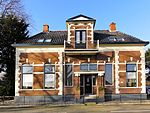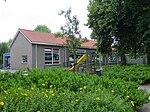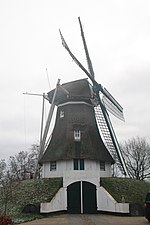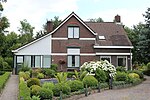The Low-Frequency Array (LOFAR) is a large radio telescope, with an antenna network located mainly in the Netherlands, and spreading across 7 other European countries as of 2019. Originally designed and built by ASTRON, the Netherlands Institute for Radio Astronomy, it was first opened by Queen Beatrix of The Netherlands in 2010, and has since been operated on behalf of the International LOFAR Telescope (ILT) partnership by ASTRON.
LOFAR consists of a vast array of omnidirectional radio antennas using a modern concept, in which the signals from the separate antennas are not connected directly electrically to act as a single large antenna, as they are in most array antennas. Instead, the LOFAR dipole antennas (of two types) are distributed in stations, within which the antenna signals can be partly combined in analogue electronics, then digitised, then combined again across the full station. This step-wise approach provides great flexibility in setting and rapidly changing the directional sensitivity on the sky of an antenna station. The data from all stations are then transported over fiber to a central digital processor, and combined in software to emulate a conventional radio telescope dish with a resolving power corresponding to the greatest distance between the antenna stations across Europe. LOFAR is thus an interferometric array, using about 20,000 small antennas concentrated in 52 stations since 2019. 38 of these stations are distributed across the Netherlands, built with regional and national funding. The six stations in Germany, three in Poland, and one each in France, Great Britain, Ireland, Latvia, and Sweden, with various national, regional, and local funding and ownership. Italy officially joined the International LOFAR Telescope (ILT) in 2018; construction at the INAF observatory site in Medicina, near Bologna, is planned as soon as upgraded (so-called LOFAR2.0) hardware becomes available. Further stations in other European countries are in various stages of planning. The total effective collecting area is approximately 300,000 square meters, depending on frequency and antenna configuration. Until 2014, data processing was performed by a Blue Gene/P supercomputer situated in the Netherlands at the University of Groningen. Since 2014 LOFAR uses a GPU-based correlator and beamformer, COBALT, for that task. LOFAR is also a technology and science pathfinder for the Square Kilometre Array.












